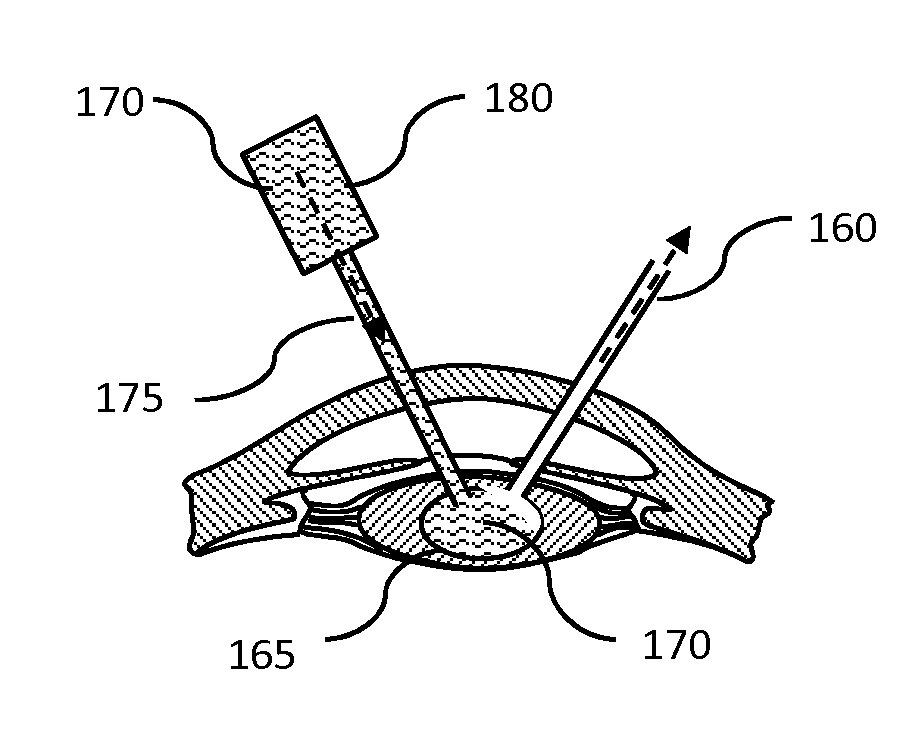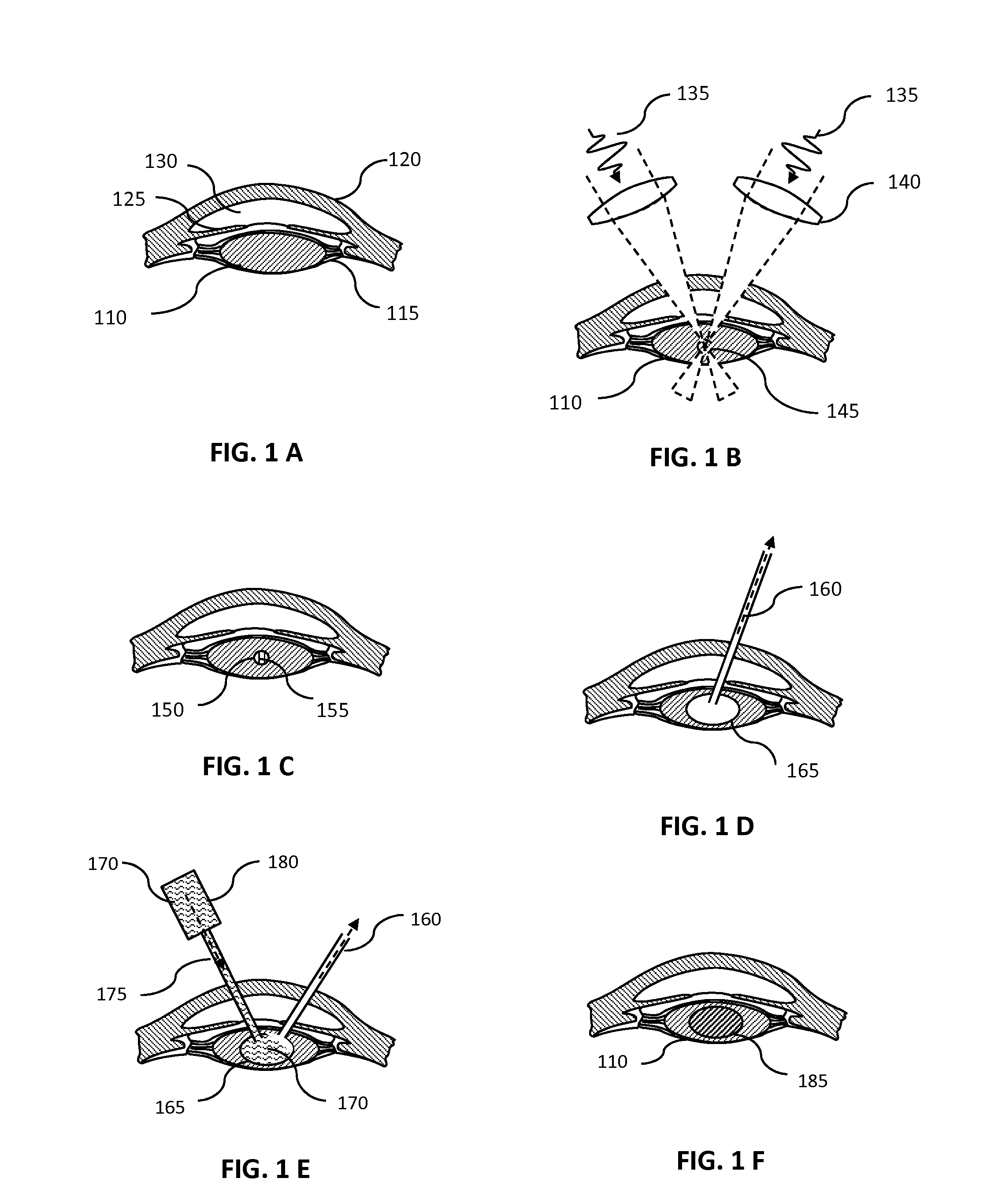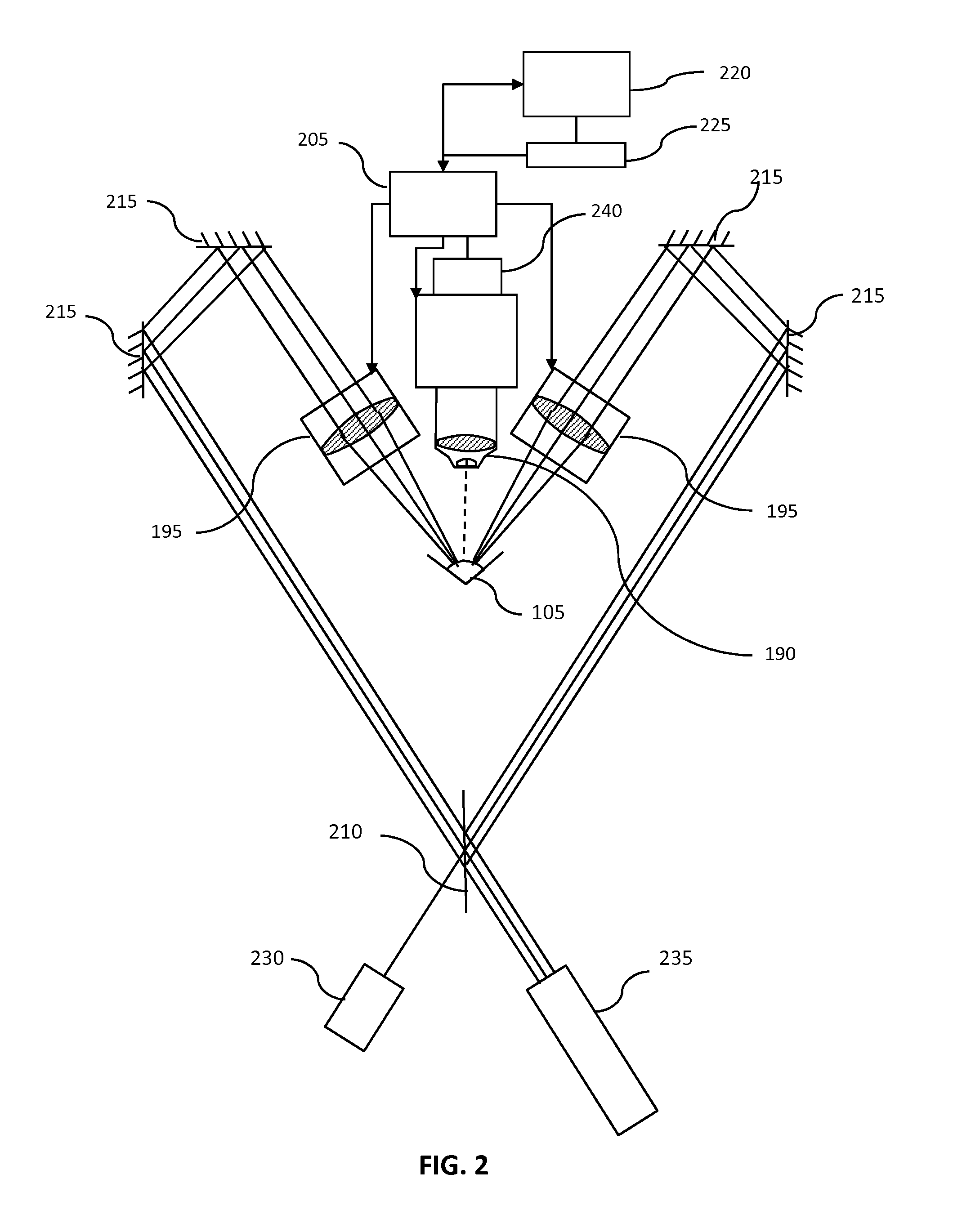Cataract Removal using Ultra-Short Pulse Lasers
- Summary
- Abstract
- Description
- Claims
- Application Information
AI Technical Summary
Benefits of technology
Problems solved by technology
Method used
Image
Examples
Embodiment Construction
[0037]The present invention is about the method and apparatus for restoring transparency of cataractous tissue in the eye lens or removing cataractous tissue from the lens capsule of an eye and replacing removed multi-photon ablated tissue by polymer material. The method consists of three stages.
[0038]In the first stage, a laser beam may be split into N beams (preferable N=2) and cross-focused at the desired point in the lens capsule. For N=2 it is preferable that the entry angle of these two beams into the eye be smaller than 90°, although it is not limited to this angle. For N=1 i.e., a single beam, it is preferable for high precision that the focusing lens has a small f-number such as, but not limited to, f / 2 or f / 3 in order to localize the focal spot. For N=2 and N>2, the f-number can be larger such as, but not limited to, f / 6 and still provide very good localization. Multi-photon ablation of cataractous tissue may then take place, using ultrashort laser pulses i.e., pulses havi...
PUM
 Login to View More
Login to View More Abstract
Description
Claims
Application Information
 Login to View More
Login to View More - R&D
- Intellectual Property
- Life Sciences
- Materials
- Tech Scout
- Unparalleled Data Quality
- Higher Quality Content
- 60% Fewer Hallucinations
Browse by: Latest US Patents, China's latest patents, Technical Efficacy Thesaurus, Application Domain, Technology Topic, Popular Technical Reports.
© 2025 PatSnap. All rights reserved.Legal|Privacy policy|Modern Slavery Act Transparency Statement|Sitemap|About US| Contact US: help@patsnap.com



